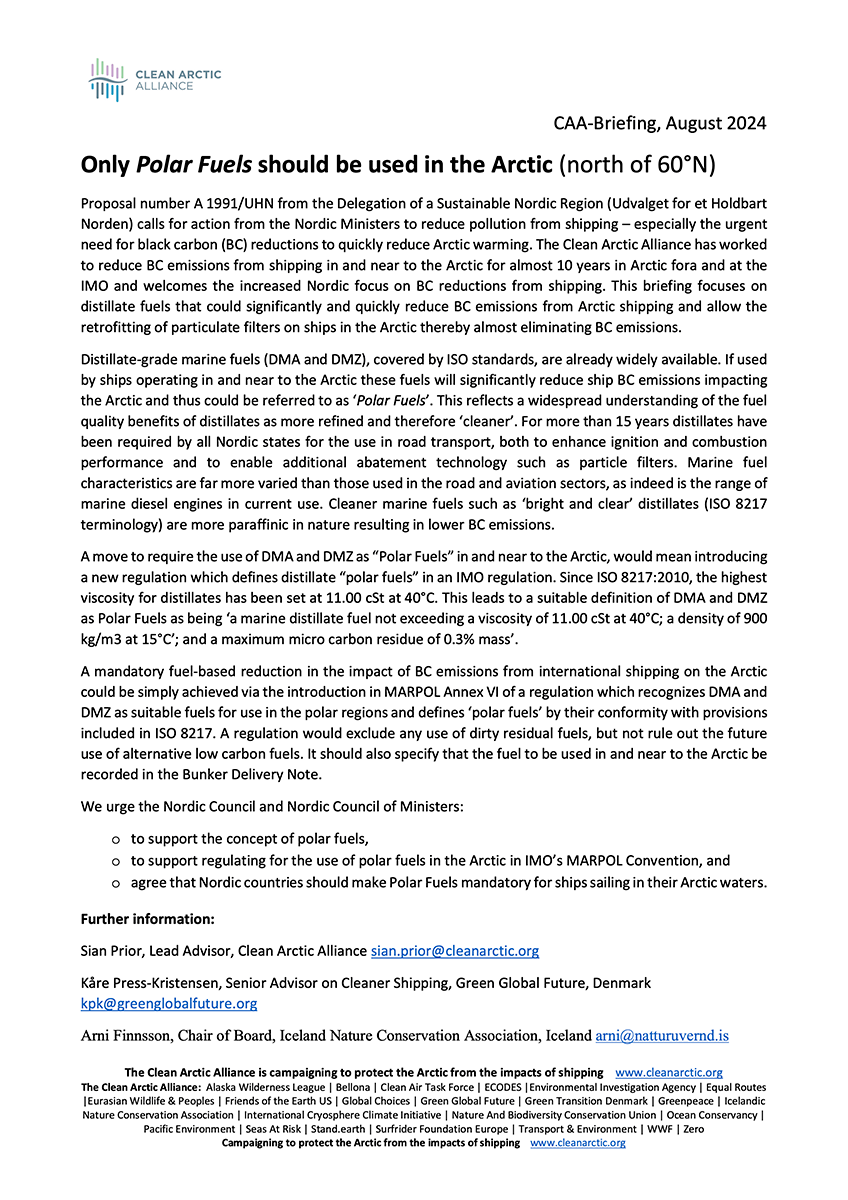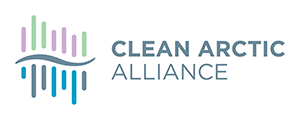
Proposal number A 1991/UHN from the Delegation of a Sustainable Nordic Region (Udvalget for et Holdbart Norden) calls for action from the Nordic Ministers to reduce pollution from shipping – especially the urgent need for black carbon (BC) reductions to quickly reduce Arctic warming. The Clean Arctic Alliance has worked to reduce BC emissions from shipping in and near to the Arctic for almost 10 years in Arctic fora and at the IMO and welcomes the increased Nordic focus on BC reductions from shipping. This briefing focuses on distillate fuels that could significantly and quickly reduce BC emissions from Arctic shipping and allow the retrofitting of particulate filters on ships in the Arctic thereby almost eliminating BC emissions.
Distillate-grade marine fuels (DMA and DMZ), covered by ISO standards, are already widely available. If used by ships operating in and near to the Arctic these fuels will significantly reduce ship BC emissions impacting the Arctic and thus could be referred to as ‘Polar Fuels’. This reflects a widespread understanding of the fuel quality benefits of distillates as more refined and therefore ‘cleaner’. For more than 15 years distillates have been required by all Nordic states for the use in road transport, both to enhance ignition and combustion performance and to enable additional abatement technology such as particle filters. Marine fuel characteristics are far more varied than those used in the road and aviation sectors, as indeed is the range of marine diesel engines in current use. Cleaner marine fuels such as ‘bright and clear’ distillates (ISO 8217 terminology) are more paraffinic in nature resulting in lower BC emissions.
A move to require the use of DMA and DMZ as “Polar Fuels” in and near to the Arctic, would mean introducing a new regulation which defines distillate “polar fuels” in an IMO regulation. Since ISO 8217:2010, the highest viscosity for distillates has been set at 11.00 cSt at 40°C. This leads to a suitable definition of DMA and DMZ as Polar Fuels as being ‘a marine distillate fuel not exceeding a viscosity of 11.00 cSt at 40°C; a density of 900 kg/m3 at 15°C’; and a maximum micro carbon residue of 0.3% mass’.
A mandatory fuel-based reduction in the impact of BC emissions from international shipping on the Arctic could be simply achieved via the introduction in MARPOL Annex VI of a regulation which recognizes DMA and DMZ as suitable fuels for use in the polar regions and defines ‘polar fuels’ by their conformity with provisions included in ISO 8217. A regulation would exclude any use of dirty residual fuels, but not rule out the future use of alternative low carbon fuels. It should also specify that the fuel to be used in and near to the Arctic be recorded in the Bunker Delivery Note.
We urge the Nordic Council and Nordic Council of Ministers:
o to support the concept of polar fuels,
o to support regulating for the use of polar fuels in the Arctic in IMO’s MARPOL Convention, and
o agree that Nordic countries should make Polar Fuels mandatory for ships sailing in their Arctic waters.
Further information – contact us
Download PDF: Only Polar Fuels should be used in the Arctic (north of 60°N)

